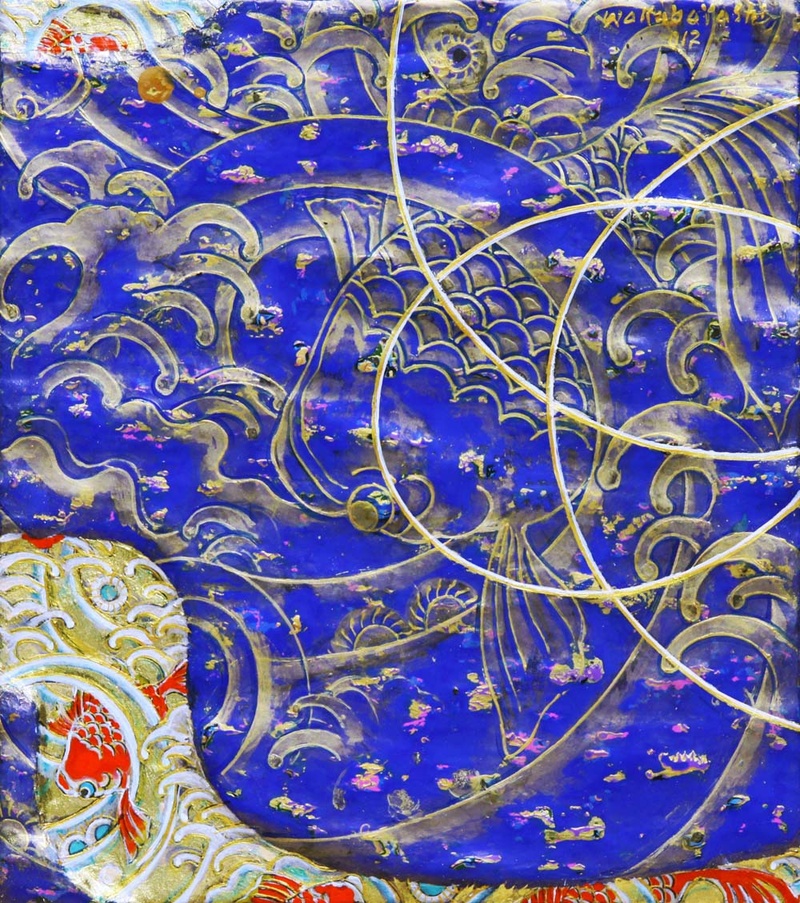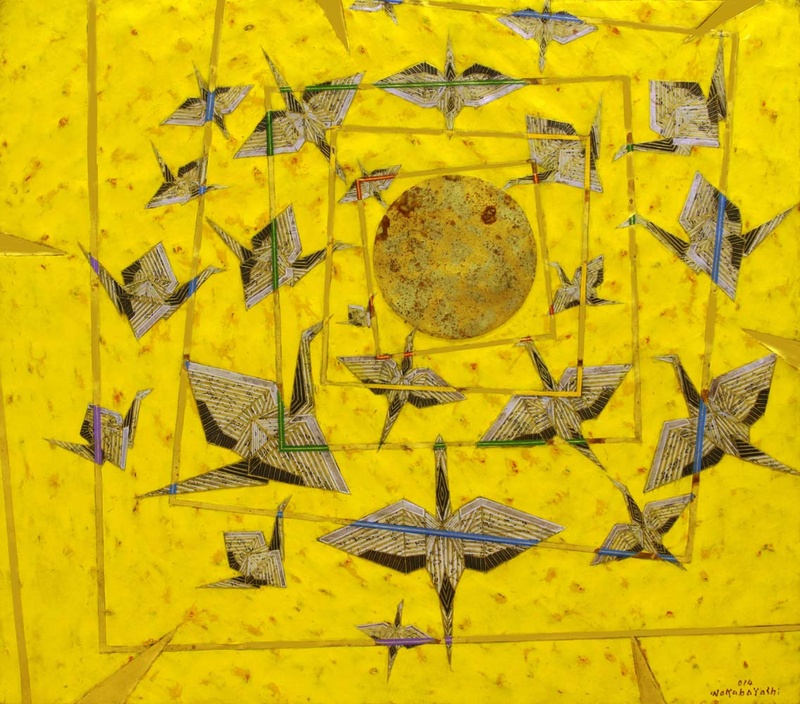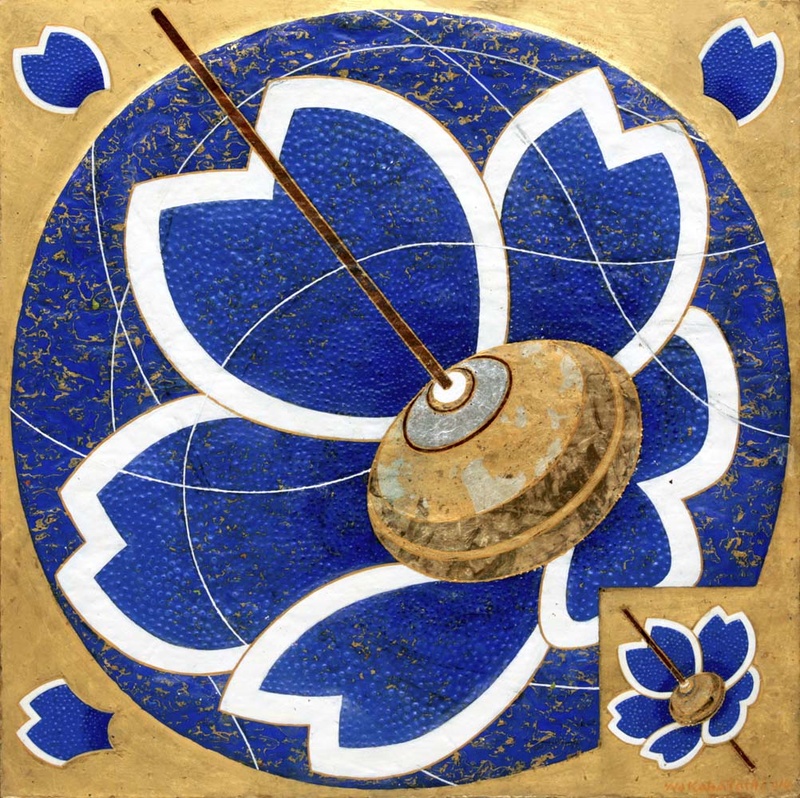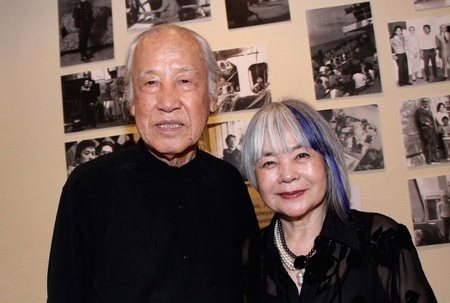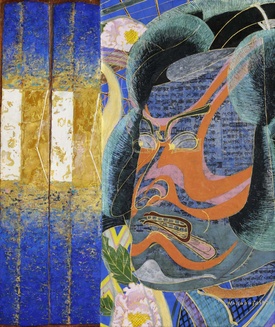The renowned Japanese painter Kazuo Wakabayashi turned ninety years old last May, and to celebrate eighty years of his artistic initiation, he presents São Paulo with the exhibition Wakabayashi, Master of Japanese-Brazilian Painting , from October 8th to 22nd at Espaço Arte M Mizrahi, in Jardim Paulista, in the south of São Paulo, organized by the Government of the State of São Paulo, through the Secretariat of Culture and Creative Economy. The exhibition features 27 paintings by the artist, curated by art critic Enock Sacramento, coordinated by Ely Iutaka and produced by Hiro Kai.
The artist was born in Kobe, in Hyogo Prefecture, Japan, and received his first painting lessons at the elementary school in his hometown in 1941.
Wakabayashi arrived in Brazil, aboard the America Maru , in Santos, with a letter of introduction from the painter Waichi Tsutaka, who had participated years before in the São Paulo Biennial, addressed to Manabu Mabe and Tomie Ohtake. Wakabayashi was welcomed by the two. He became close to Mabe who introduced him to several friends from the Japanese community and gallery owners, contributing to his integration process.
When Wakabayashi arrived in Brazil, he created an abstract painting that was immediately approved by salon juries and art galleries in the country. At the time, informal abstractionism was on the rise in Brazil. In 1959, Manabu Mabe, an abstractionist painter, had won the award for Best National Painter at the 5th São Paulo Biennial. Wakabayashi's star rose precipitously. He participated in important group shows and held numerous solo exhibitions in Brazil and abroad. In 1987, he received the Itamarati Prize, at the 9th São Paulo International Biennial.
When he emigrated to Brazil in 1961, at the age of 30, Wakabayashi was already a professional artist. After participating in art salons in Japan and winning prizes in some of them, Wakabayashi participated in several group shows in his home country. In 1960, he held a solo exhibition at the prestigious KCC gallery and, the following year, another solo exhibition at the important Daimaru Gallery, both in Kobe. In the first, Wakabayashi met Hikari Sakamoto, whom he married months later.
Within his abstract painting, in the 1960s, a series of works stand out that refer to the configuration of certain geological formations made up of a single rock that rises from a base. For this series, the exhibition's curator, Enock Sacramento, in the essay he wrote for the exhibition's catalogue, proposes the name Monoliths . In the following decade, he invested much of his time in texture and relief research. In the late 1970s, he produced works with a thick texture and a single color. They constitute the artist’s Monochromatic series. In the following decade, however, elements of traditional Japanese culture began to appear in his works.
The Japanese series is subdivided into several subseries: Temari, Kabuki, Kanzashi, Orizuru Carpas, Pões . Over the last twenty years, he has also created works that can be grouped into two series: Bananeiras and Parreiras . Wakabayashi, who stopped painting two years ago due to health problems, stated that if he returned to painting, he would like to return to full abstraction.
Enock Sacramento explains that master Kazuo Wakabayashi sometimes took months to complete a work, due to the complex process he created, bringing together elaborate technique and intense poetics. “He is certainly one of the highest expressions of Japanese-Brazilian painting, a master of his craft”, concludes the critic.
The exhibition will be held as a result of a project submitted to ProAC – Cultural Action Program, the Secretariat of Culture and Creative Economy of the State of São Paulo, undertaken by QSP Projetos Culturais, and will be generally coordinated by Ely Iutaka. Visits to the exhibition, in compliance with health security measures, will be pre-scheduled by Sympla to avoid crowds. Visitors must wear masks and alcohol gel will be available at the entrance to the gallery for everyone.
* * * * *
Exhibition “Wakabayashi, master of Japanese-Brazilian painting"
Where: Espaço Arte M. Mizhari – Rua Peixoto Gomide, 1757 – Jardim Paulista, São Paulo, SP.
When: From October 8th to 22nd
Opening hours: Monday to Friday, from 10 am to 7 pm and Saturdays, from 10 am to 3 pm
Information: WhatsApp 11 94105-8449
Free admission: Visits by appointment via Sympla
© 2021 Luci Júdice Yizima




